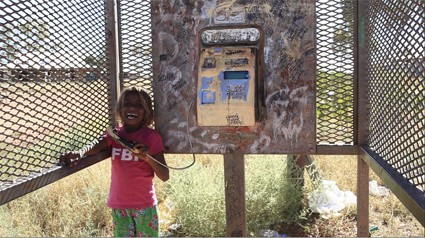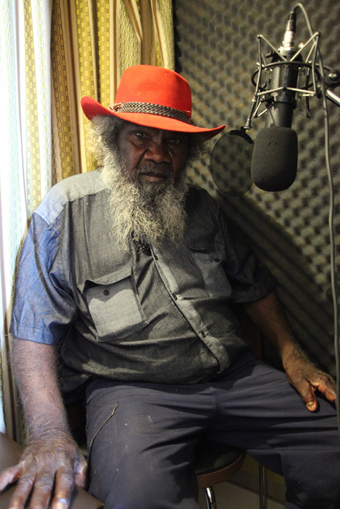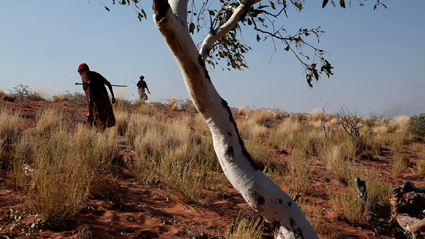in the loop nov 6: bringing the desert to town
we don't need a map, fremantle arts centre

Maisie Parrngurr, Phone Booth, We don’t need a map
image Curtis Taylor & Lily Hibberd
Maisie Parrngurr, Phone Booth, We don’t need a map
THE MARTU ARE THE ORIGINAL INHABITANTS OF OVER 20 MILLION HECTARES OF THE WESTERN DESERT AREA OF AUSTRALIA WHICH INCLUDES PERCIVAL LAKES AND THE PILBARA. THE EXHIBITION TITLED WE DON’T NEED A MAP AIMS NOT ONLY TO PRESENT ARTWORK FROM THE REGION BUT ALSO TO INVOKE A TANGIBLE SENSE OF THE PLACE AS WELL AS ITS PEOPLE, THEIR STORIES AND RICH TRADITIONS.
The exhibition is produced by Fremantle Arts Centre in collaboration with Martumili Arts, a cultural hub instrumental in arranging the commercial sale of works which sustain the Martu community. The centrepiece of the exhibition is a five-by-three metre painting created by sisters Lily Long and Amy French which offers an intricate and highly detailed record of stories, sites, spirits and animals. This is complemented by over 40 paintings and works-on-paper by other artists in the region using a variety of techniques to depict daily life and ancient traditions.

Yunkurra Billy Atkins working on Cannibal Story, We don’t need a map
courtesy Fremantle Arts Centre
Yunkurra Billy Atkins working on Cannibal Story, We don’t need a map
The curators Gabrielle Sullivan from Martumili Arts, Kathleen Sorensen, a Martu artist and cultural consultant, and Erin Coates from FAC have also commissioned collaborative media-based works which bring together Martu and non-Martu artists. The Phone Booth Project sees Martu filmmaker Curtis Taylor and Melbourne visual artist Lily Hibberd collaborating on a video installation that explores the role of the public phone booth in these remote communities. In Cannibal Story, senior Martu artist Yunkurra Billy Atkins teams up with animator Sohan Ariel Hayes to bring to life Atkins’ images depicting the stories associated with Kumpupirntily (Lake Disappointment). Lynette Wallworth and her collaborator Peter Brundle have also travelled to Martu country and conferred with the local community to make a multi-channel video work titled Still Walking Country which explores the intricate connection between land and place as experienced via the perspective of newcomers to the area.

Lynette Wallworth, Kumbayah, Still Walking Country, We don’t need a map
image Lynette Wallworth
Lynette Wallworth, Kumbayah, Still Walking Country, We don’t need a map
The exhibition also involves a collaboration with Kanyirninpa Jukurrpa (KJ), a Martu controlled organisation that “seeks to build strong, sustainable communities based on Martu culture and knowledge” (press release). KJ’s ranger teams combine traditional land practices and environmental monitoring to assist with management of the area. They have provided interpretative information for the exhibition “linking the knowledge embodied in the paintings with sites, species, stories and landforms” (press release) and will be running Cultural Awareness Workshops.
And last but by no means least, the Pilbara will literally be coming to the FAC doorstep with 22 tonnes of soil being shifted to the front garden of the gallery in order to plant flora from the region.
FAC, Kanyirninpa Jukurrpa and Martumili Artists: We don’t need a map—a Martu experience of the Western Desert; Fremantle Arts Centre; Nov 17, 2012-Jan 20 2013 http://www.fac.org.au/;http://wedontneedamap.com.au/
RealTime issue #111 Oct-Nov 2012 pg. web






